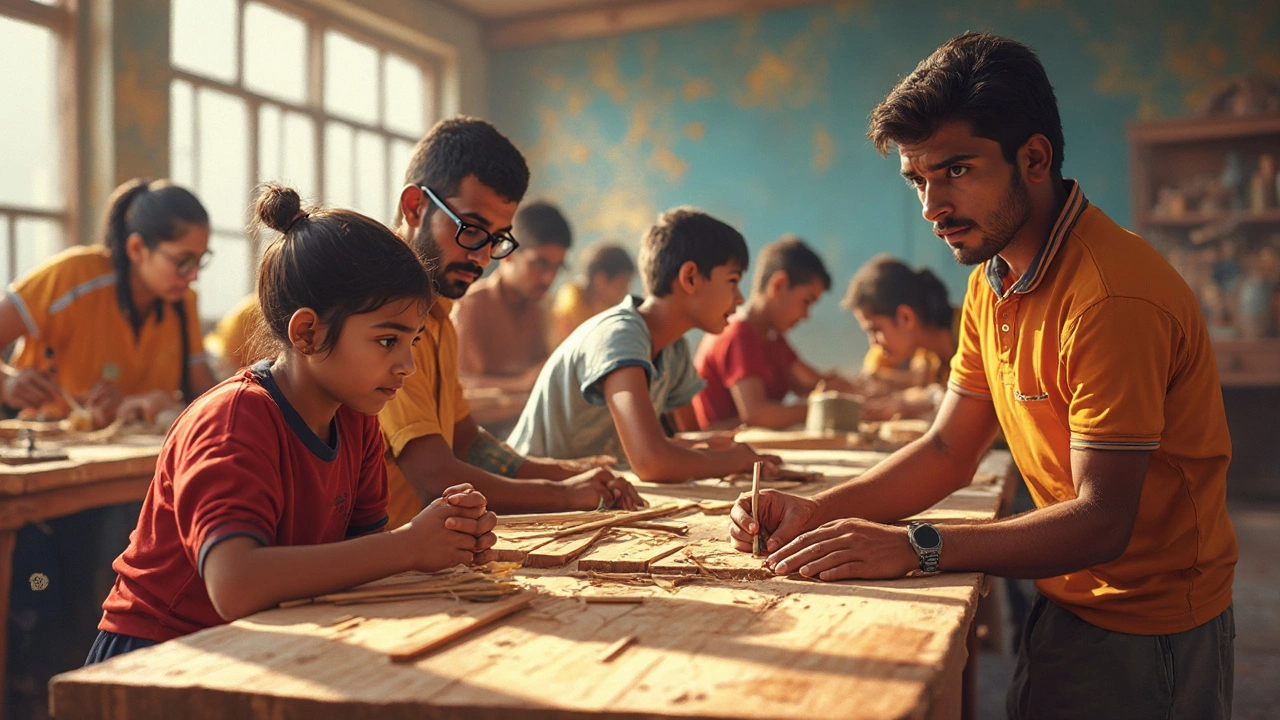Hands-On Learning: How to Make Lessons Stick Through Doing
Ever notice kids remember a science experiment better than a textbook paragraph? That’s hands‑on learning in action. Instead of just listening, students get to touch, build, and test ideas themselves. It turns abstract concepts into real experiences, and the effect shows up in higher confidence and better scores.
Hands‑on learning isn’t a new buzzword; it’s a proven teaching method that matches how our brains naturally work. When a learner moves, talks, or creates something, the brain fires multiple pathways at once. That extra activation makes the information stick longer and helps students apply what they know in new situations.
Why Hands-On Learning Works
First, it creates immediate feedback. If a student builds a simple circuit and it lights up, they instantly see the result of their effort. If it doesn’t work, they can troubleshoot, adjust, and try again. That trial‑and‑error cycle builds problem‑solving skills faster than memorizing formulas.
Second, it boosts motivation. Kids who get to move around the classroom, use real objects, or collaborate on a project feel more involved. Motivation drives attendance, participation, and a willingness to push through challenges.
Third, it supports different learning styles. Visual learners see the result, kinesthetic learners enjoy the physical activity, and auditory learners benefit from discussions during the process. One activity can hit all three styles at once.
Finally, hands‑on learning connects school to real life. When students see how math formulas help them bake a cake or how physics explains a roller coaster, they understand the relevance of what they’re studying.
Simple Ways to Bring Hands-On Learning Into Any Classroom
1. Mini‑Experiments: Turn a lesson into a short experiment. For a chemistry class, have students mix vinegar and baking soda to watch a reaction and then calculate the gas volume produced.
2. Model Building: In geography, let learners create a clay model of a river basin. In history, they could assemble a timeline using index cards and pictures.
3. Role Play: For language classes, set up a mock market where students practice buying and selling items in the target language. It turns vocabulary into real conversation.
4. Data Collection: Ask students to measure the temperature in different parts of the school for a day, record the data, and plot a graph. They practice math while learning about environmental science.
5. Project Kits: Use ready‑made kits—like simple robotics or solar‑powered devices—that students can assemble and test. Kits give clear steps while still leaving room for creativity.
6. Peer Teaching: Pair up students and let each teach a concept they’ve mastered to the other. Teaching reinforces knowledge and builds communication skills.
7. Reflection Journals: After each activity, have students write a short note about what they tried, what worked, and what they’d change. Reflection turns experience into deeper learning.
Start small. Pick one topic each week and add a quick hands‑on element. Over time, those mini‑activities will add up to a more engaging, practical classroom where students learn by doing—not just by listening.
Ready to try? Grab a few everyday items—paper clips, rubber bands, simple sensors—and design a quick challenge for your next lesson. Watch how curiosity pops, questions rise, and learning becomes something students can see, touch, and own.
Vocational Training: What Is It and Who Needs It?
Vocational training is all about equipping individuals with specific skills for particular trades or careers. It focuses on practical, hands-on experience and prepares learners for direct entry into specific professions. From electricians to healthcare aides, vocational courses cover a broad range of careers and are essential for many industries. These courses often offer quicker paths to employment and are a great fit for people who prefer learning by doing. In this article, we'll explore what vocational training entails and why it might be the right choice for you.
read more